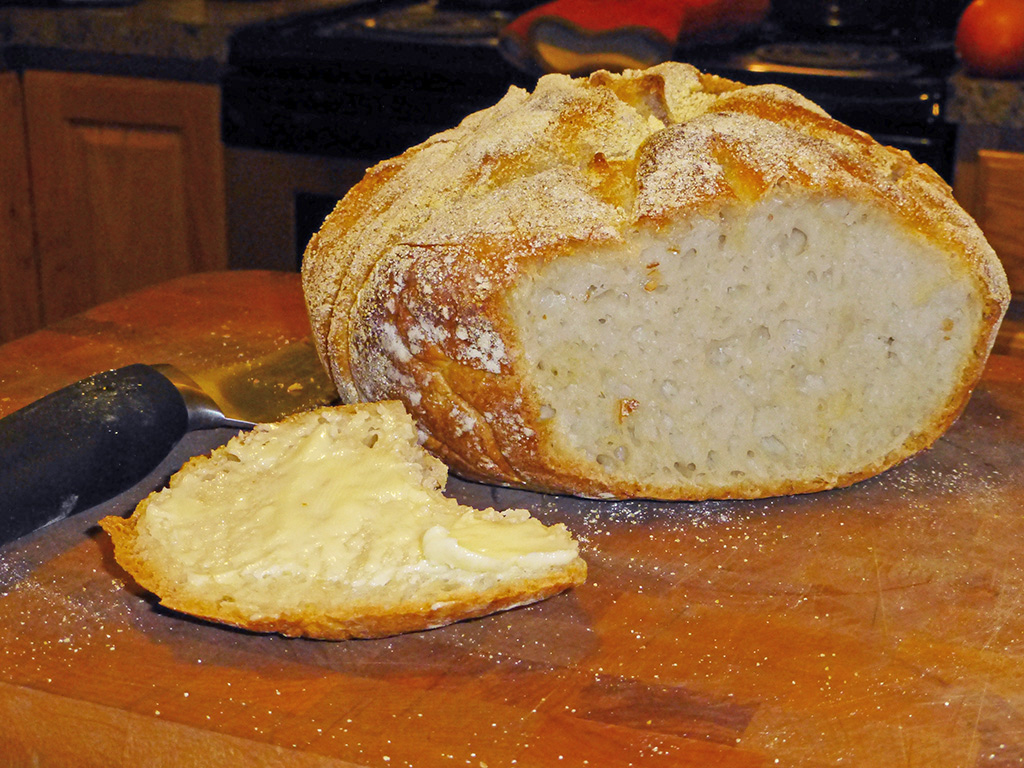I just found out that there are a lot of people who believe sourdough is yeast-free, and plenty of organisations and companies that encourage that belief by people who for whatever reason want to follow a yeast-free diet.
True sourdough bread does not contain yeast and instead utilizes a lactobacilli based starter culture.[1] True sourdough bread is also baked at a lower temperature[2] for a longer period of time which protects the integrity of the cereal grains[3] and preserves the nutritional value[4].
[1] No. It’s lactobacilli and a variety of yeasts living in symbiosis, where the bacteria consume sugars in the flour the yeast cannot and the yeast consumes the fermentation byproducts of the bacteria. Lactic acid produced by the bacteria lends the sour flavour; the yeast produces the carbon dioxide that leavens the bread.
[2] Generally speaking, it’s baked at the same or just slightly lower temperature than other breads but indeed for a longer time because the crust browns more slowly.
[3] Integrity of the grains? Come now, they’ve been powdered.
[4] For any reason other than it sounds appealing?
Yesterday, I found that a local bakery that produces a decent sourdough – I’m partial to their sourdough rye – also fails to understand some basics:
The natural yeast itself also has important health benefits for your digestive tract (the good bacteria[1] survive in the center of the loaves where the internal temperature does not get hot[2]).
[1] Yeast is good, but it’s not a bacteria; it’s a fungus.
[2] The good bacteria do not survive. Lactobacillus sanfranciscensis is killed after just a few minutes at 140°F/60°C, and the centre of a sourdough loaf – most breads, for that matter – should reach around 200°F/95°C for a few minutes before it’s taken out of the oven. Take it out before that and the middle of the loaf will remain unset and gummy. Their loaves are not unset and gummy in the middle.
Edited to correct first link.


